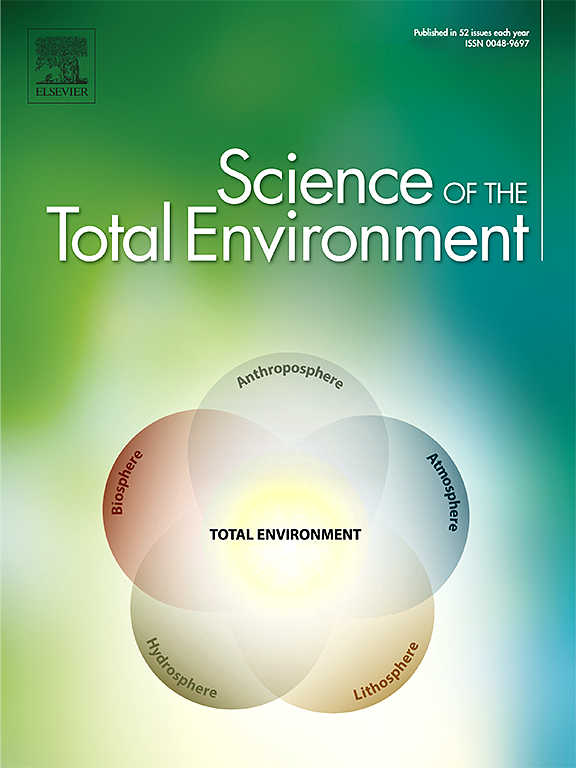Assessing and mapping changes in soil ecosystem services and soil threats in agroecosystems through scenario-based approaches – A systematic review
IF 8
1区 环境科学与生态学
Q1 ENVIRONMENTAL SCIENCES
引用次数: 0
Abstract
Scenario analysis plays a central role in estimating how global changes affect the relationships linking ecosystem conditions and functioning to human needs. This is particularly true for agroecosystems, which are pivotal to ensure sustainable land planning, ecological management and food security strategies. Soils are key providers of multiple ecosystem services (ES) in agroecosystems but they are very sensitive to global drivers such as changes in climate, land use and cover. How agroecosystems should achieve sustainability, through optimizing soil capacity to supply ES while limiting the occurrence of threats, is a priority of EU policy agendas. Nevertheless, there is currently a lack of a comprehensive framework of scenario-based approaches to assess changes in soil ES (SES) and soil threats (ST). As a part of the project SERENA funded by the European Joint Program on Agricultural Soil Management, this study aims to: i) understand how drivers of global change are commonly studied in the scientific literature; ii) identify how some SES and ST are assessed in scenario-based approaches; iii) provide a preliminary discussion on how soil properties are represented in these approaches. Through a systematic review of 230 published articles related to seven SES and ten ST, this study highlights that not all SES and ST are considered with the same frequency and geographic distribution in scenario-based approaches. Despite a great methodological variability in the assessment and mapping of SES and ST, dominant methodological trends can be identified. SES are mapped more frequently than ST and, specific SES appear more disposed to spatially explicit assessments than others. Due to its novelty and complexity, research on this topic is limited to a small subset of ST or SES and projections of the combined impacts of climate, land use and management changes on multiple ST and SES should be a scientific priority to help policy makers.

通过基于情景的方法评估和绘制农业生态系统中土壤生态系统服务和土壤威胁的变化图 - 系统综述
情景分析在估计全球变化如何影响生态系统条件和功能与人类需求之间的关系方面发挥着核心作用。农业生态系统尤其如此,因为它对确保可持续土地规划、生态管理和粮食安全战略至关重要。土壤是农业生态系统中多种生态系统服务(ES)的关键提供者,但它们对气候、土地利用和覆盖变化等全球驱动因素非常敏感。在限制威胁发生的同时,如何通过优化土壤容量来提供ES,从而实现农业生态系统的可持续性,是欧盟政策议程的优先事项。然而,目前缺乏基于情景方法的综合框架来评估土壤ES (SES)和土壤威胁(ST)的变化。作为欧洲农业土壤管理联合计划资助的SERENA项目的一部分,本研究旨在:i)了解全球变化的驱动因素如何在科学文献中得到普遍研究;ii)确定如何在基于情景的方法中评估某些SES和ST;Iii)提供关于如何在这些方法中表示土壤性质的初步讨论。通过对230篇与7个SES和10个ST相关的已发表文章的系统回顾,本研究强调,在基于场景的方法中,并非所有SES和ST都被认为具有相同的频率和地理分布。尽管在SES和ST的评估和制图方面存在很大的方法差异,但可以确定主要的方法趋势。SES比ST更频繁地被映射,特定的SES似乎比其他SES更倾向于空间明确的评估。由于其新颖性和复杂性,对该主题的研究仅限于ST或SES的一小部分,气候,土地利用和管理变化对多个ST和SES的综合影响的预测应该成为帮助决策者的科学优先事项。
本文章由计算机程序翻译,如有差异,请以英文原文为准。
求助全文
约1分钟内获得全文
求助全文
来源期刊

Science of the Total Environment
环境科学-环境科学
CiteScore
17.60
自引率
10.20%
发文量
8726
审稿时长
2.4 months
期刊介绍:
The Science of the Total Environment is an international journal dedicated to scientific research on the environment and its interaction with humanity. It covers a wide range of disciplines and seeks to publish innovative, hypothesis-driven, and impactful research that explores the entire environment, including the atmosphere, lithosphere, hydrosphere, biosphere, and anthroposphere.
The journal's updated Aims & Scope emphasizes the importance of interdisciplinary environmental research with broad impact. Priority is given to studies that advance fundamental understanding and explore the interconnectedness of multiple environmental spheres. Field studies are preferred, while laboratory experiments must demonstrate significant methodological advancements or mechanistic insights with direct relevance to the environment.
 求助内容:
求助内容: 应助结果提醒方式:
应助结果提醒方式:


